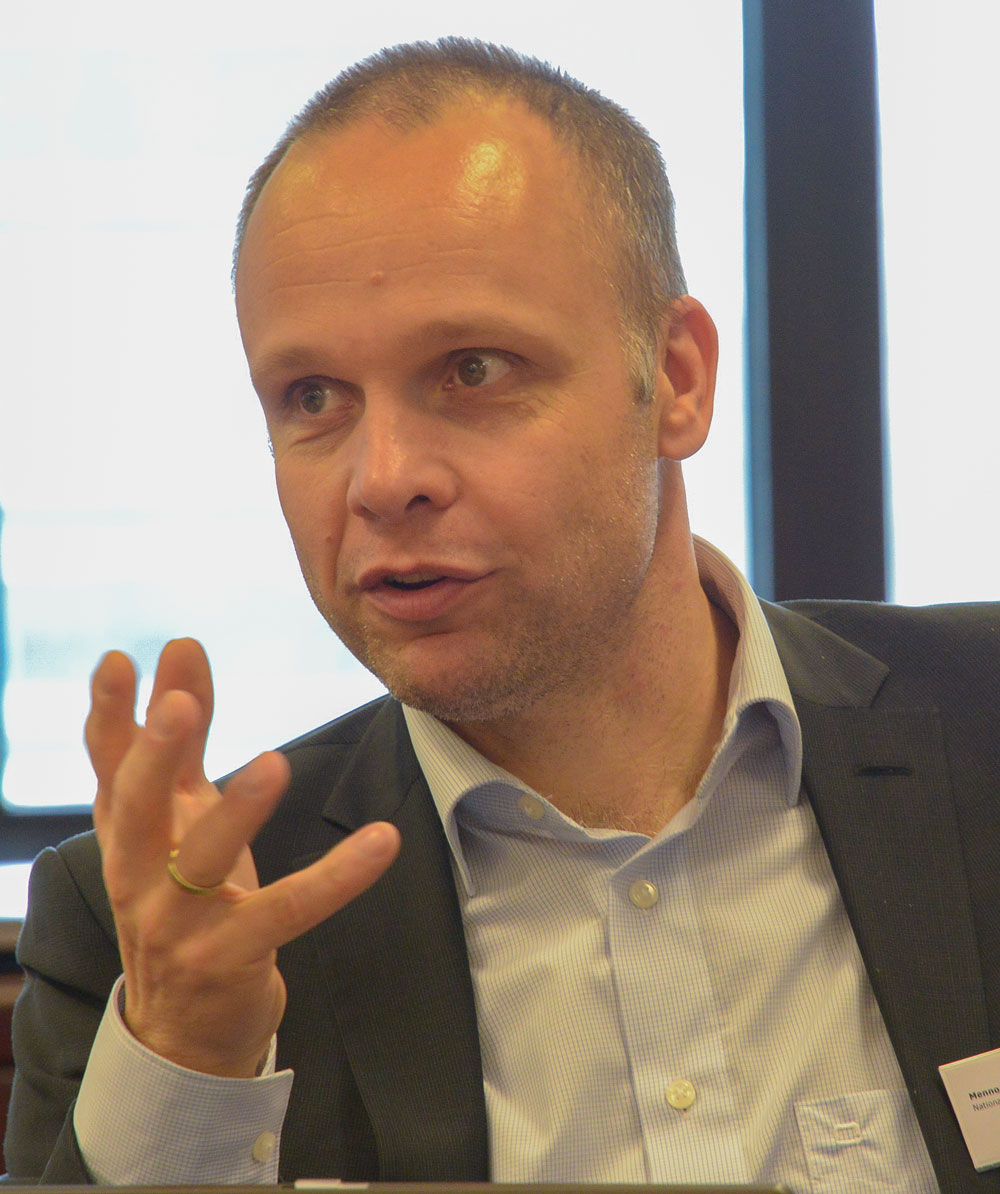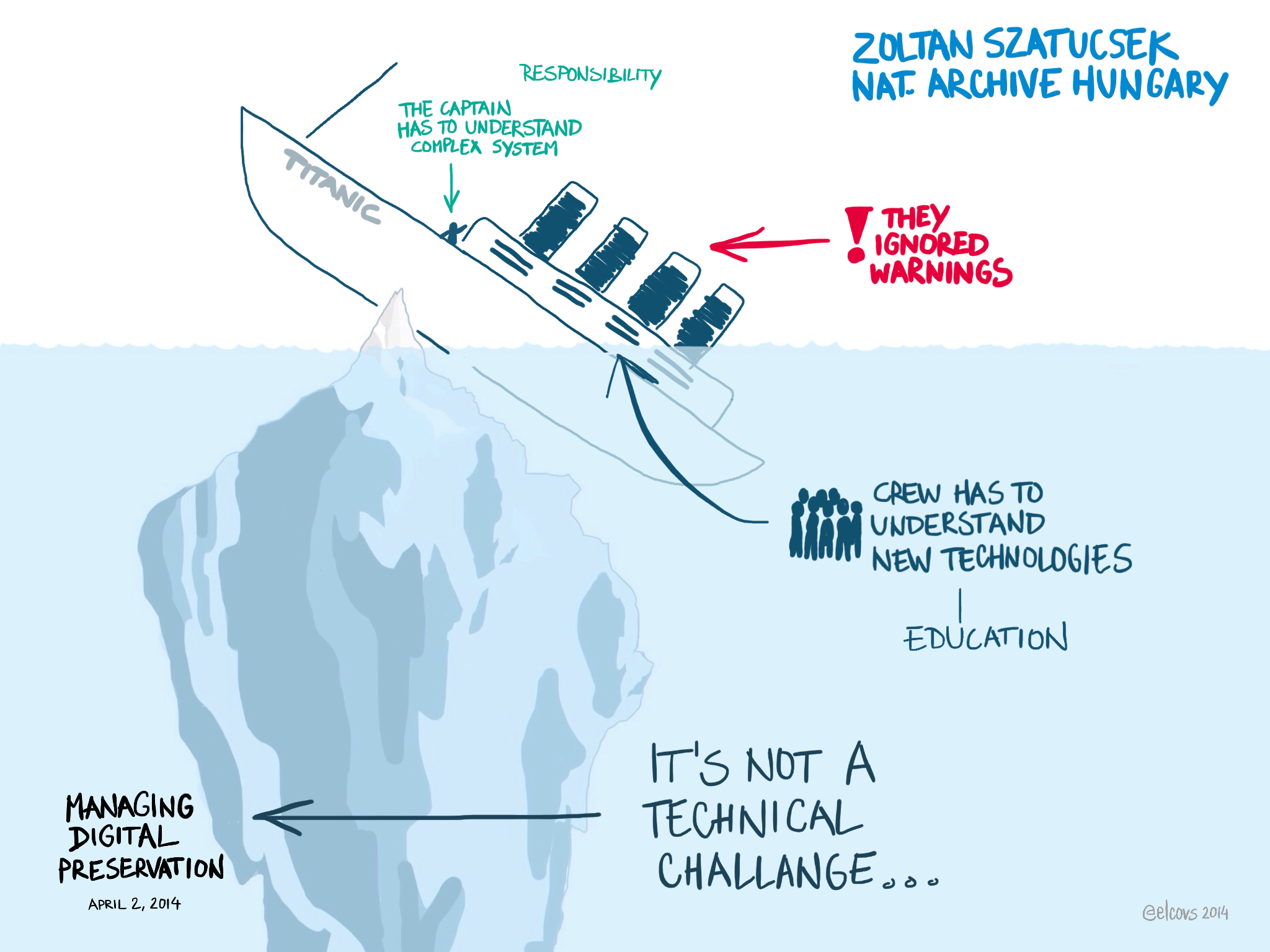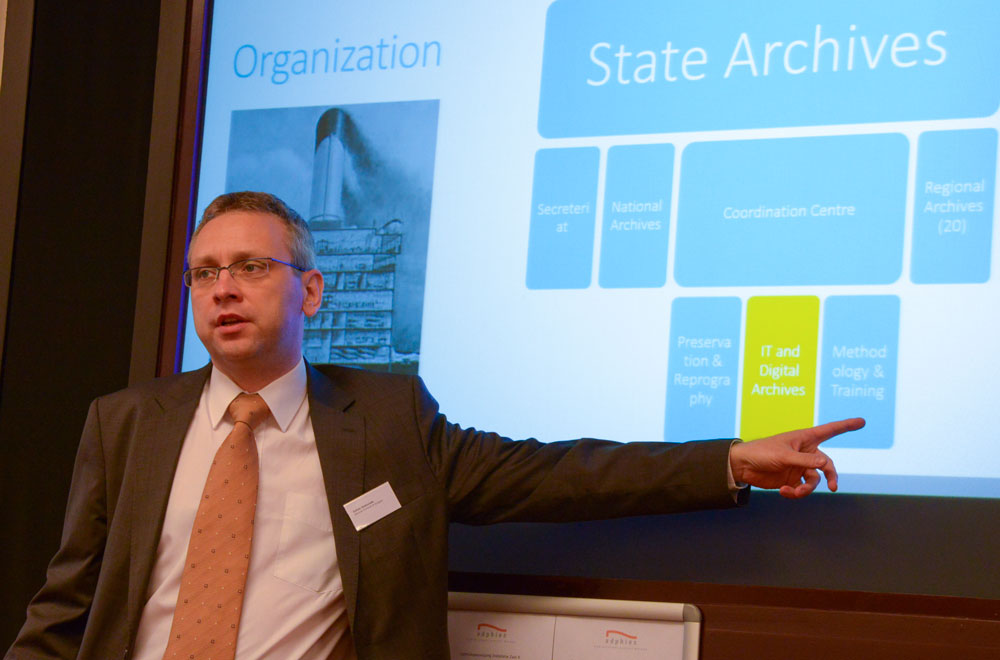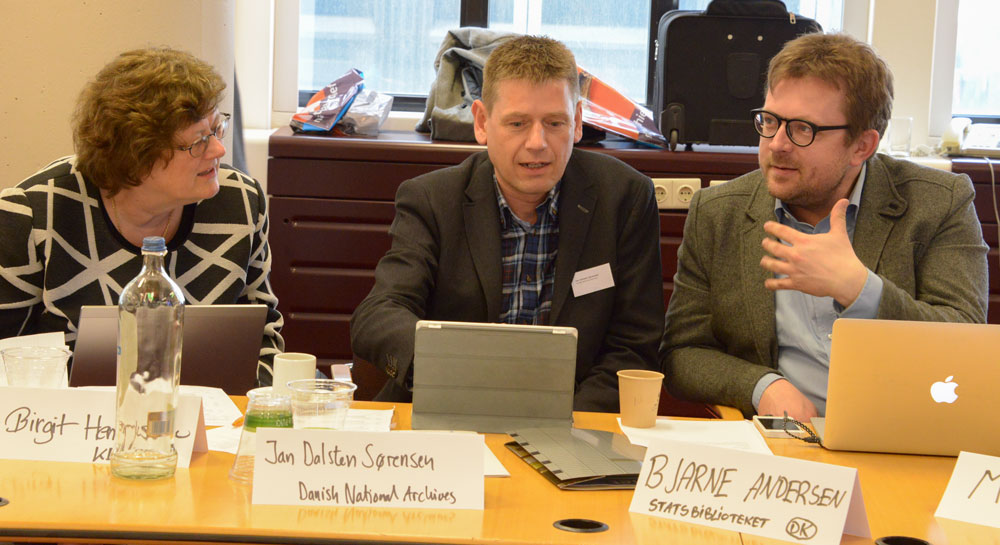People & knowledge are the keys to breaking down the walls between daily operations and digital preservation (DP) within our organisations. DP is not a technical issue, but information technology must be embraced as as a core feature of the digital library. Such were some of the conclusions of the seminar organised by the SCAPE project/Open Planets Foundation at the Dutch National Library (KB) and National Archives (NA) on Wednesday 2 April. – Report & photographs by Inge Angevaare, visualisations by Elco van Staveren
Newcomer questions some current practices
Menno Rasch was appointed Head of Operations at the Dutch KB 6 months ago – but ’I still feel like a newcomer in digital preservation.’ His division includes the Collection Care department which is responsible for DP. But there are close working relationships with the Research and IT departments in the Innovation Division. Rasch’s presentation about embedding DP in business practices in the KB posed some provocative questions:

Menno Rasch: ‘Do correct me if I’m wrong’
- We have a tendency to cover up our mistakes and failures rather than expose them and discuss them in order to learn as a community. That is what pilots do. The platform is there, the Atlas of Digital Damages set up by the KB’s Barbara Sierman, but it is being underused. Of course lots of data are protected by copyright or privacy regulations, but there surely must be some way to anonimise the data.
- In libraries and archives, we still look upon IT as ‘the guys that make tools for us’. ‘But IT = the digital library.’
- We need to become more pragmatic. Implementing the OAIS standard is a lot of work – perhaps it is better to take this one step at a time.
- ‘If you don’t do it now, you won’t do it a year from now.’
- ‘Any software we build is temporary – so keep the data, not the software.’
- Most metadata are reproducible – so why not store them in a separate database and put only the most essential preservation metadata in the OAIS information package? That way we can continue improving the metadata. Of course these must be backed up too (an annual snapshot?), but may tolerate a less expensive storage regime than the objects.
- About developments at the KB: ‘To replace our old DIAS system, we are now developing software to handle all of our digital objects – which is an enormous challenge.’

SCAPE/OPF seminar on Managing Digital Preservation, 2 April 2014, The Hague
Digital collections and the Titanic
Zoltan Szatucsket from the Hungarian National Archives used the Titanic for his presentation’s metaphor – without necessarily implying that we are headed for the proverbial iceberg, he added. Although, … ’many elements from the Titanic story can illustrate how we think’:
- Titanic received many warnings about ice formations, and yet it was sailing at full speed when disaster struck.
- Our ship – the organisation – is quite conservative. It wants to deal with digital records in the same way it deals with paper records. And at the Hungarian National Archives IT and archivist staff are in the same department, which does not work because they do not speak each others’ language.

Zoltan Szatucsket argued that putting together IT staff and archivists in the Hungarian National Archives caused ‘language’ problems; his Danish colleagues felt that in their case close proximity had rather helped improve communications
- The captain must acquire new competences. He must learn to manage staff, funding, technology, equipment, etc. We need processes rather than tools.
- The crew is in trouble too. Their education has not adapted to digital practices. Underfunding in the sector is a big issue. Strangely enough, staff working with medieval resources were much quicker to adopt digital practices than those working with contemporary material. They seem to want to put off any action until legal transfer to the archives actually occurs (15-20 years).
- Echoing Menno Rasch’s presentation, Szatucsket asked the rhetorical question: ‘Why do we not learn from our mistakes?’ A few months after Titanic, another ship went down in similar circumstances
- Without proper metadata, objects are lost forever.
- Last but not least: we have learned that digital preservation is not a technical challenge. We need to create a complete environment in which to preserve.

Are our digital collections heading for the iceberg as well? A visualisation of Szatucsket’s presentation
OPF: trust, confidence & communication
Ed Fay was appointed director of the Open Planets Foundation (OPF) only six weeks ago. But he presented a clear vision of how the OPF should function within the community, crack in the middle, as a steward of tools, a champion of open communications, trust & confidence, a broker between commercial and non-commercial interests:
Ed Fay’s vision of the Open Planets Foundation’s role in the digital preservation community
Fay also shared some of his experiences in his former job at the London School of Economics:
Ed Fay illustrated how digital preservation was moved around a few times in the London School of Economics Library, until it found its present place in the Library division
So, what works, what doesn’t?
The first round-table discussion was introduced by Bjarne Anderson of the Statsbiblioteket Aarhus (DK). He sketched his institution’s experiences in embedding digital preservation.

Bjarne Andersen (right) conferring with Birgit Henriksen (Danish Royal Library, left) and Jan Dalsten Sorensen (Danish National Archives. ‘SCRUM has helped move things along’
He mentioned the recently introduced SCRUM-based methodology as really having helped to move things along – it is an agile way of working which allows for flexibility. The concept of ‘user stories’ helps to make staff think about the ‘why’. Menno Rasch (KB) agreed: ‘SCRUM works especially well if you are not certain where to go. It is a step-by-step methodology.’
Some other lessons learned at Aarhus:
- The responsibility for digital preservation cannot be with the developers implementing the technical solutions
- The responsibility needs to be close to ‘the library’
- Don’t split the analogue and digital library entirely – the two have quite a lot in common
- IT development and research are necessary activities to keep up with a changing landscape of technology
- Changing the organisation a few times over the years helped us educate the staff by bringing traditional collection/library staff close to IT for a period of time.

Group discussion. From the left: Jan Dalsten Sorensen (DK), Ed Fay (OPF), Menno Rasch (KB), Marcin Werla (PL), Bjarne Andersen (DK), Elco van Staveren (KB, visualising the discussion), Hildelies Balk (KB) and Ross King (Austria)
And here is how Elco van Staveren visualised the group discussion in real time:
Some highlights from the discussion:
- Embedding digital preservation is about people
- It really requires open communication channels.
- A hierarchical organisation and/or an organisation with silos only builds up the wall. Engaged leadership is called for. And result-oriented incentives for staff rather than hierarchical incentives.
- Embedding digital preservation in the organisation requires a vision that is shared by all.
- Clear responsibilities must be defined.
- Move the budgets to where the challenges are.
- The organisation’s size may be a relevant factor in deciding how to organise DP. In large organisations, the wheels move slowly (no. of staff in the Hungarian National Archives 700; British Library 1,500; Austrian National Library 400; KB Netherlands 300, London School of Economics 120, Statsbiblioteket Aarhus 200).
- Most organisations favour bringing analogue and digital together as much as possible.
- When it comes to IT experts and librarians/archivists learning each other’s languages, it was suggested that maybe hard IT staff need not get too deeply involved in library issues – in fact, some IT staff might consider it bad for their careers. Software developers, however, do need to get involved in library/archive affairs.
- Management must also be taught the language of the digital library and digital preservation.
(Continued in Breaking down walls in digital preservation, part 2) [link to follow]
Seminar agenda and links to presentations

